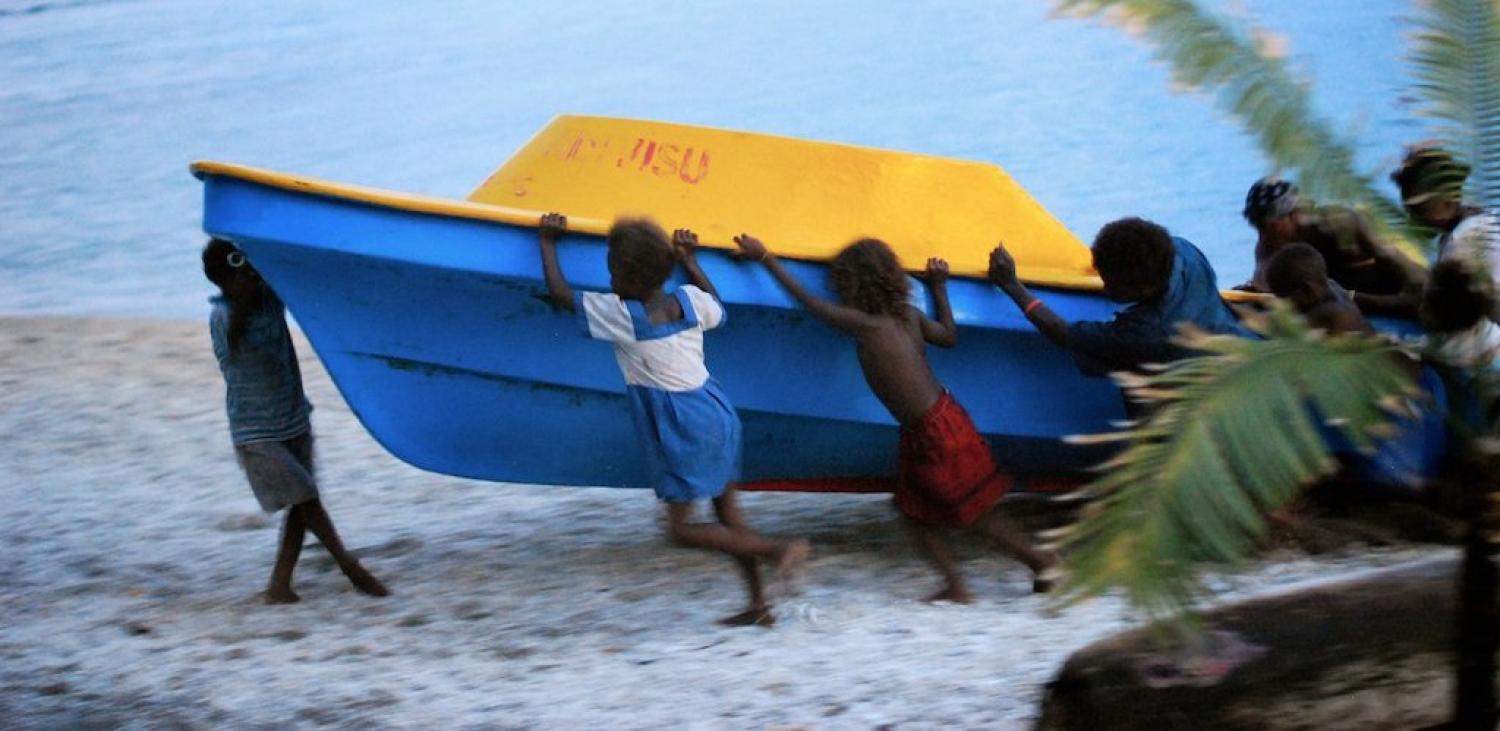In Wellington earlier this year, Cook Islands Prime Minister Henry Puna took the opportunity to signal the benefits of the Pacific’s traditional development partners collaborating with China. Puna described the Pacific as a region of consensus rather than of competition, and said it was not the venue for a zero-sum game.
Other Pacific leaders have been at pains to defend China as a legitimate development partner in the region, including Papua New Guinea and Samoa, as well as China itself. What’s more, the call has gone out for development partners to collaborate on major projects to meet the needs of the region.
Listening and coordinating
Chinese aid is here to stay. Although Chinese aid lacks transparency, research indicates that it is the third-largest donor to the region, and in some Pacific countries is the most significant donor. In light of Australia’s so-called “step up” and New Zealand’s “reset” towards the Pacific, it is timely to consider the risks and opportunities for greater coordination and collaboration with China in the region.
Knuckling down to real and meaningful cooperation between development partners can demonstrate clearly to the leaders and peoples of the Pacific that concerns are truly being heard, acknowledged, and acted upon. This is a prerequisite for a future in which “partnership” becomes a reality.
More and better coordination by development partners will reduce transaction costs for Pacific island countries and go some way to delivering on commitments already set out in the Paris principles and the Cairns Compact. Even for partners who may not be signatories to these frameworks, there are opportunities to distil the underlying principles for application to good effect.
Where to work together
The starting point lies with Pacific island countries, in the form of national planning documents. Examples include the National Sustainable Development Plan of Vanuatu and the National Development Plan of Fiji. In addition, national agencies with a mandate to drive aid coordination must be backed by political will and technical capacity to lead.
Recently, Australian National University researcher Graeme Smith identified methodologies that have the potential to promote more and better cooperation between China and Australia (and, we would argue, New Zealand) in the Pacific. They include increased diplomatic engagement within a developing country, and expansion of working together to areas of shared interest and expertise, such as scholarships, agricultural extension programs, food systems, and medical teams.
To this, we would add the potential for “traditional” partners to strengthen efforts with China in Humanitarian Assistance and Disaster Response (HADR). Law enforcement, specifically in relation to transnational crime, is another area for potential coordination and collaboration.
Responding to disaster
Australia and New Zealand are the primary first responders to disasters in the Pacific, with Chinese efforts restricted to donations of cash and goods. However, China is emerging as a global player in HADR, so there is an opportunity to further integrate China into efforts in the Pacific to both build capacity and facilitate better coordination.
China first participated in the New Zealand–led Exercise Tropic Twilight in 2015, and has since participated in multinational HADR exercises such as this month’s joint disaster response exercise with New Zealand and Vanuatu. In addition to developing defence capabilities and interoperability, there is a clear imperative to build capacity within the Pacific among first responders, which includes medical providers and civil society.
As yet it is unclear whether China is interested in taking on a greater HADR role within the region. This approach is not without its risks. An increased HADR role for China would have to be negotiated within the context of pre-existing arrangements, such as the tripartite agreement between France, Australia, and New Zealand (known as the FRANZ arrangement) and the Quadrilateral Defence Coordination Group (QUAD), and would undoubtedly fuel concerns about Chinese intentions.
Combating crime
Transnational crime is an increasingly prominent feature of the region’s security landscape and a cross-cutting threat to sustainable development. In recognition of this, members of the Fijian Police Force will be trained by China in counter-narcotics and drug enforcement capabilities. Both Australia and New Zealand have police liaison officers based in Beijing.
Transnational crime, and what is dubbed the Crystal Road for drug trafficking from China southwards through the Pacific to Australia and New Zealand, is a central focus of cooperation between the law enforcement agencies.
Given that China is both a source of the problem and critical to its solution, these initiatives could be further strengthened through the facilitation of deeper coordination, particularly with and between Pacific law enforcement agencies and their partners, in the areas of intelligence and investigative capability. Greater resourcing for the Pacific Islands Chiefs of Police and the Pacific Transnational Crime Network is critical to meet this challenge.
China is here to stay
With an increase in learning and research, Beijing’s approach to development assistance is changing rapidly, and the impacts of the Asian Infrastructure Investment Bank and the new aid agency have yet to be appreciated. With China’s State Council having direct oversight of aid planning and delivery, diplomatic interests will drive aid.
There are important, and possibly challenging, lessons to learn from the attempts at trilateral engagement, as have been seen so far in Cook Islands and Papua New Guinea. While there are concerns about the success of the projects, more effort will be needed on all sides if the wishes of Pacific leaders for greater coordination can be realised.


